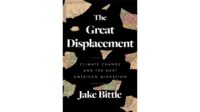Commemorating Minerva Parker Nichols, the First Independent Woman Architect in the United States
Review: ‘Minerva Parker Nichols: The Search for a Forgotten Architect’ opens March 21 at the University of Philadelphia's Architectural Archives

Architects & Firms

Minerva Parker Nichols. Photo courtesy the University of Pennsylvania Architectural Archives
“I’ve always been interested in the ways women have shaped the built environment,” says Molly Lester, an architectural historian and associate director of the Urban Heritage Project at the University of Pennsylvania. Lester’s decade-plus of research underpins a survey of architect Minerva Parker Nichols, presented by the Architectural Archives at the University of Pennsylvania Stuart Weitzman School of Design. Nichols was the first woman in the United States to practice architecture independently. Alongside photographer Elizabeth Felicella, archivist Heather Isbell Schumacher, and curator William Whitaker, Lester has documented many of Nichols’s over 80 known projects, to “create an archive in the absence of one.”
Opening today at the Harvey & Irwin Kroiz Gallery, Minerva Parker Nichols: The Search for a Forgotten Architect will showcase Felicella’s photographs of surviving works, in concert with archival images, drawings, and documents provided by the architect’s descendants. In her role as cocurator and lead scholar, Lester aims “to stitch Minerva’s story back together and make the case that she’s significant, despite the fact that you haven’t heard of her yet.”

New Century Club of Wilmington interior. Photos courtesy the University of Pennsylvania Architectural Archives
Born in 1862 in Timber Township, Illinois, and raised by a single mother, Parker Nichols moved from Chicago to Philadelphia, where she worked as a governess while attending classes at the Franklin Institute Drawing School and the Pennsylvania Museum and School of Industrial Art. These early experiences navigating residential spaces informed her architecture, which became her specialty.
Garnering the attention of the press, she opened her Philadelphia office by early 1889. Though “novelty only got her so far,” Lester insists. “Beyond that, she actually had to prove herself—and she did.” Lester credits Parker Nichols and her Philadelphia contemporaries with setting architectural standards along the Pennsylvania Railroad route, in areas not yet recognized as formal towns.

Rachel Foster Avery Residence (1890-91). Photo by Elizabeth Felicella,
courtesy University of Pennsylvania Architectural Archives
Her work soon grew to encompass spaces instrumental in the suffrage movement and related social causes. Moving within a mosaic of suffragist leaders on the national stage, Parker Nichols designed flexible spaces and scaled-up residences for gathering and organizing. In the 1890s, she completed a pair of New Century Clubs, one in Philadelphia and one in Wilmington, Delaware—the first women’s club designed by a woman—and suffragist Rachel Foster Avery’s house, which featured grand pocket doors that opened to connect rooms for large meetings. “She’s not taking the platform herself, but making suffrage possible in these spaces,” says Lester.
Despite a prolific career, mentions in more than 600 international newspapers, and a headlined New York Times obituary following her death in 1949, Parker Nichols faded from memory. Lester suggests this might have been due to the lack of a university or organization to do the remembering (Parker Nichols came up through apprenticeships and never joined the AIA). “Within the established canon of who’s worth remembering, she didn’t fit,” says Lester. Yet her success, which paved the way for many others, has finally brought her story into the spotlight.
Accompanied by a publication containing Parker Nichols’s catalogue raisonné, The Search for a Forgotten Architect will be on view and free to the public through June 17.

1

2
Overbrook Land Improvement Company, 1890 (1) and Wallace Munn Residence, 1890-1891 (2). Photo by Elizabeth Felicella, courtesy University of Pennsylvania Architectural Archives




